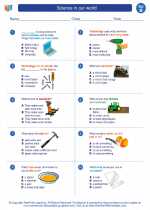Membrane Potential
Membrane potential refers to the difference in electric potential between the interior and exterior of a cell membrane. It is a key concept in understanding the functioning of cells, particularly in the context of nerve and muscle cells.
Key Points
- Membrane potential is generated by the separation of charges across the cell membrane, with more negative charges inside the cell compared to the outside.
- It is measured in millivolts (mV) and is typically around -70 mV in a resting neuron.
- Membrane potential is maintained by the action of ion channels and ion pumps that regulate the flow of ions across the membrane.
- Changes in membrane potential play a crucial role in processes such as nerve impulse transmission, muscle contraction, and cell signaling.
- The two main factors contributing to membrane potential are the concentration gradients of ions across the membrane and the selective permeability of the membrane to different ions.
Study Guide
To understand membrane potential in more detail, consider the following study guide:
- Basic Concepts: Start by understanding the basic concepts of electric potential, ion concentration gradients, and the structure of the cell membrane.
- Ion Channels and Pumps: Explore the function of ion channels and pumps in regulating the movement of ions across the membrane to establish and maintain membrane potential.
- Resting Membrane Potential: Learn about the concept of resting membrane potential and the role of potassium (K+) and sodium (Na+) ions in establishing this potential in neurons.
- Action Potentials: Investigate how changes in membrane potential, known as action potentials, are generated and propagated along the length of a neuron.
- Relevance in Physiology: Consider the physiological significance of membrane potential in processes such as nerve conduction, muscle contraction, and the function of excitable cells.
By mastering the above topics, you will gain a comprehensive understanding of membrane potential and its importance in cellular physiology.
Feel free to ask if you have any more questions or need further clarification!
.◂Science Worksheets and Study Guides Second Grade. Science in our world
Study Guide Science in our world
Science in our world  Worksheet/Answer key
Worksheet/Answer key Science in our world
Science in our world  Worksheet/Answer key
Worksheet/Answer key Science in our world
Science in our world  Worksheet/Answer key
Worksheet/Answer key Science in our world
Science in our world  Vocabulary/Answer key
Vocabulary/Answer key Science in our world
Science in our world 

 Worksheet/Answer key
Worksheet/Answer key
 Worksheet/Answer key
Worksheet/Answer key
 Worksheet/Answer key
Worksheet/Answer key
 Vocabulary/Answer key
Vocabulary/Answer key

The resources above cover the following skills:
LIFE SCIENCE (NGSS)
Biological Evolution: Unity and Diversity
Students who demonstrate understanding can:
Make observations of plants and animals to compare the diversity of life in different habitats[Clarification Statement: Emphasis is on the diversity of living things in each of a variety of different habitats.] [Assessment Boundary: Assessment does not include specific animal and plant names in specific habitats.]